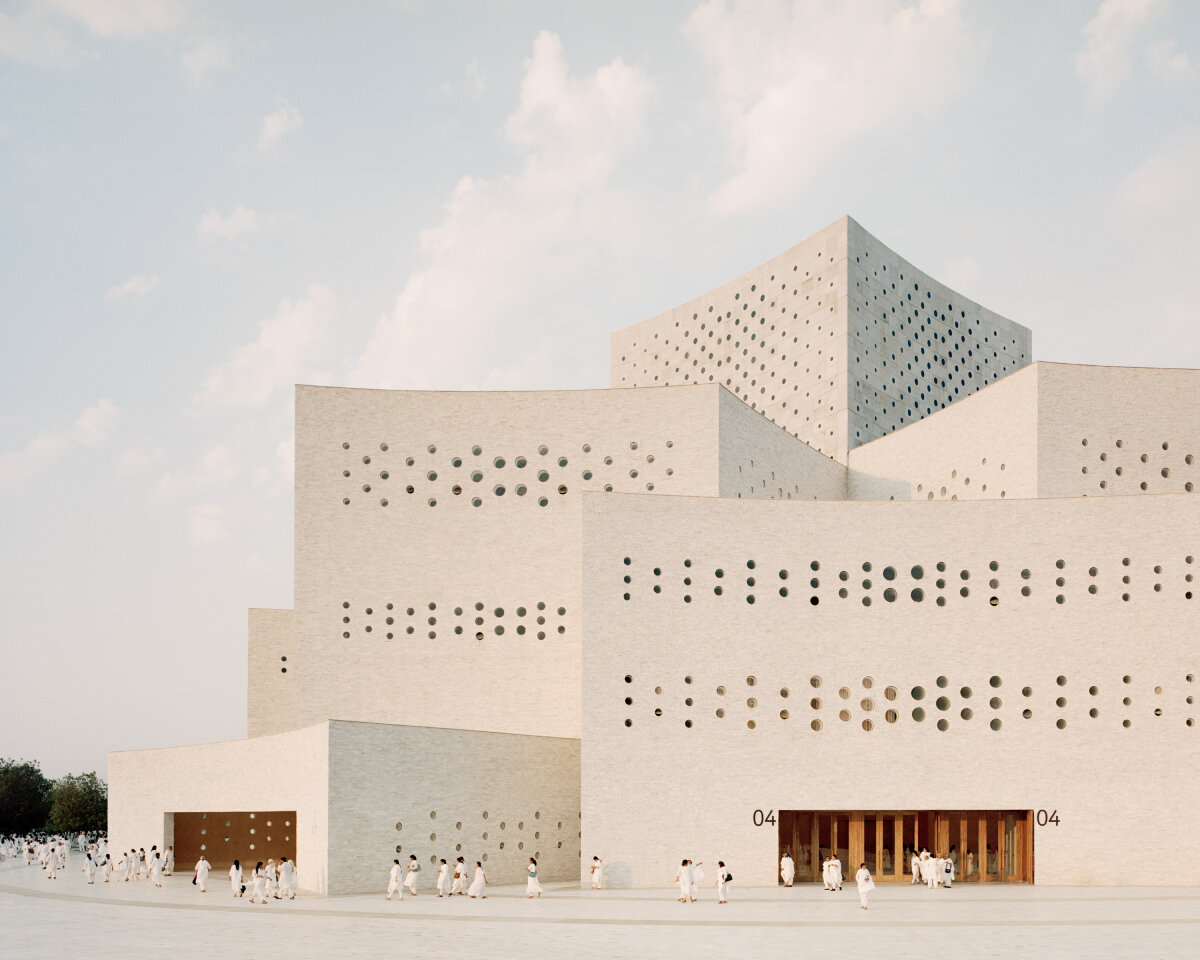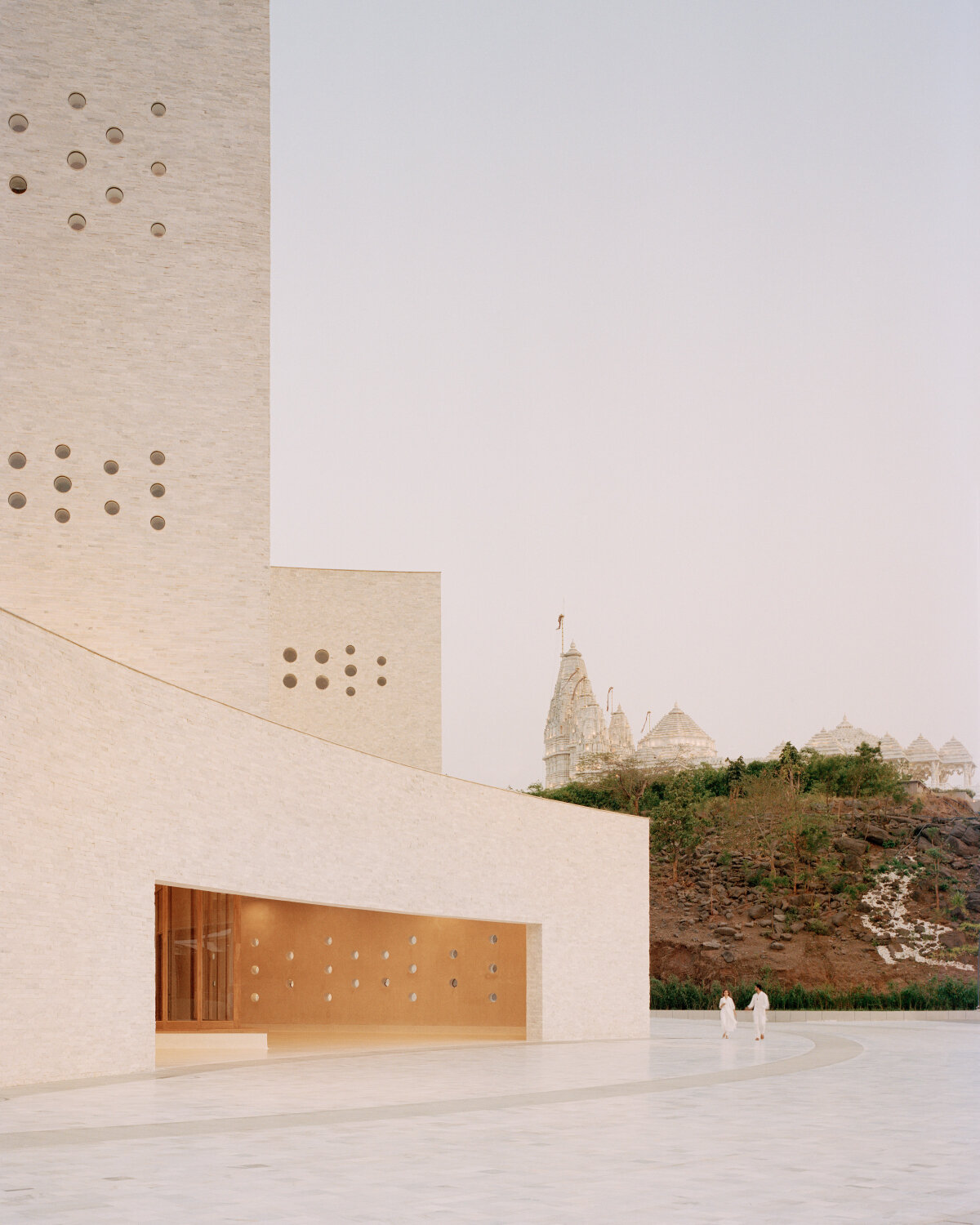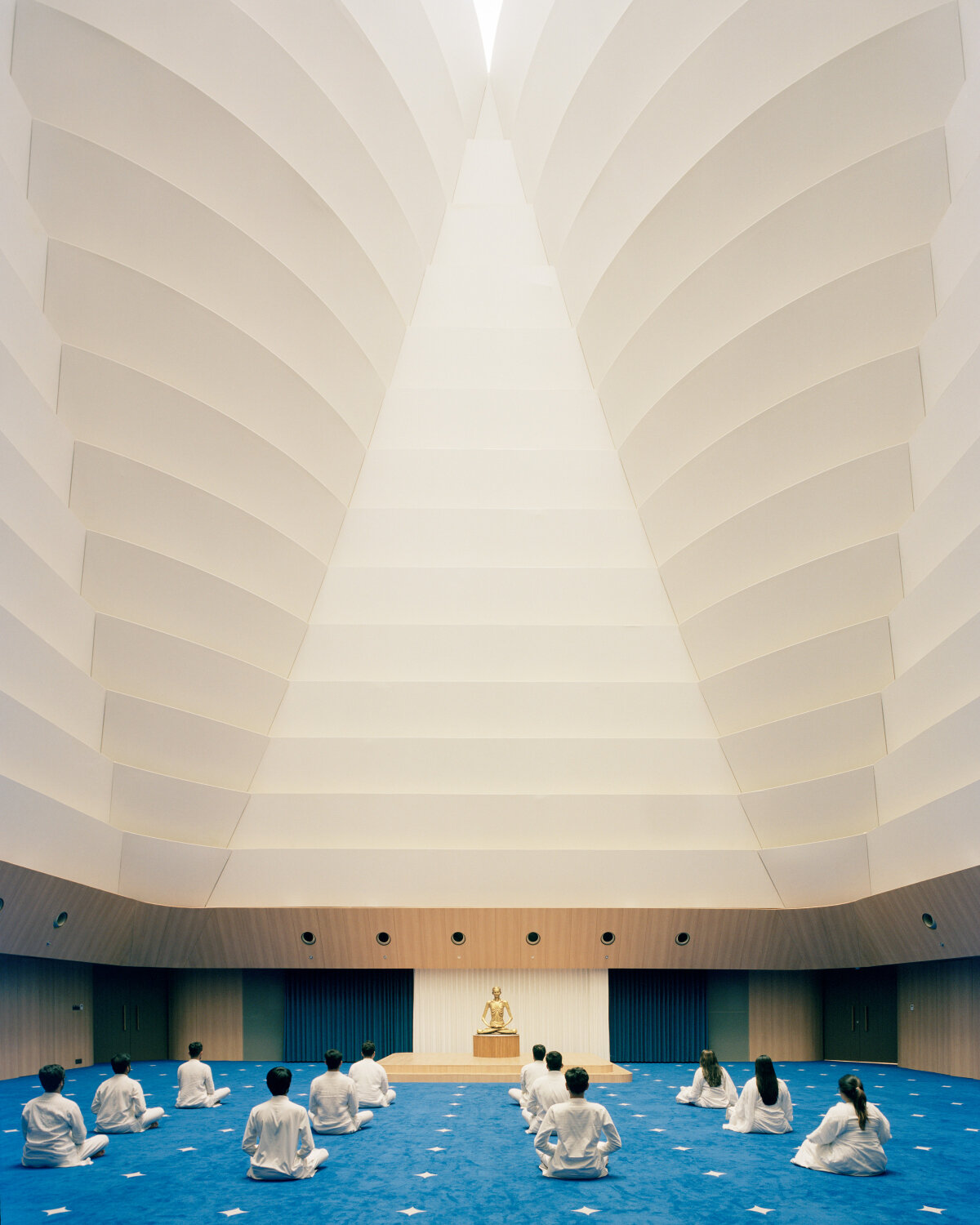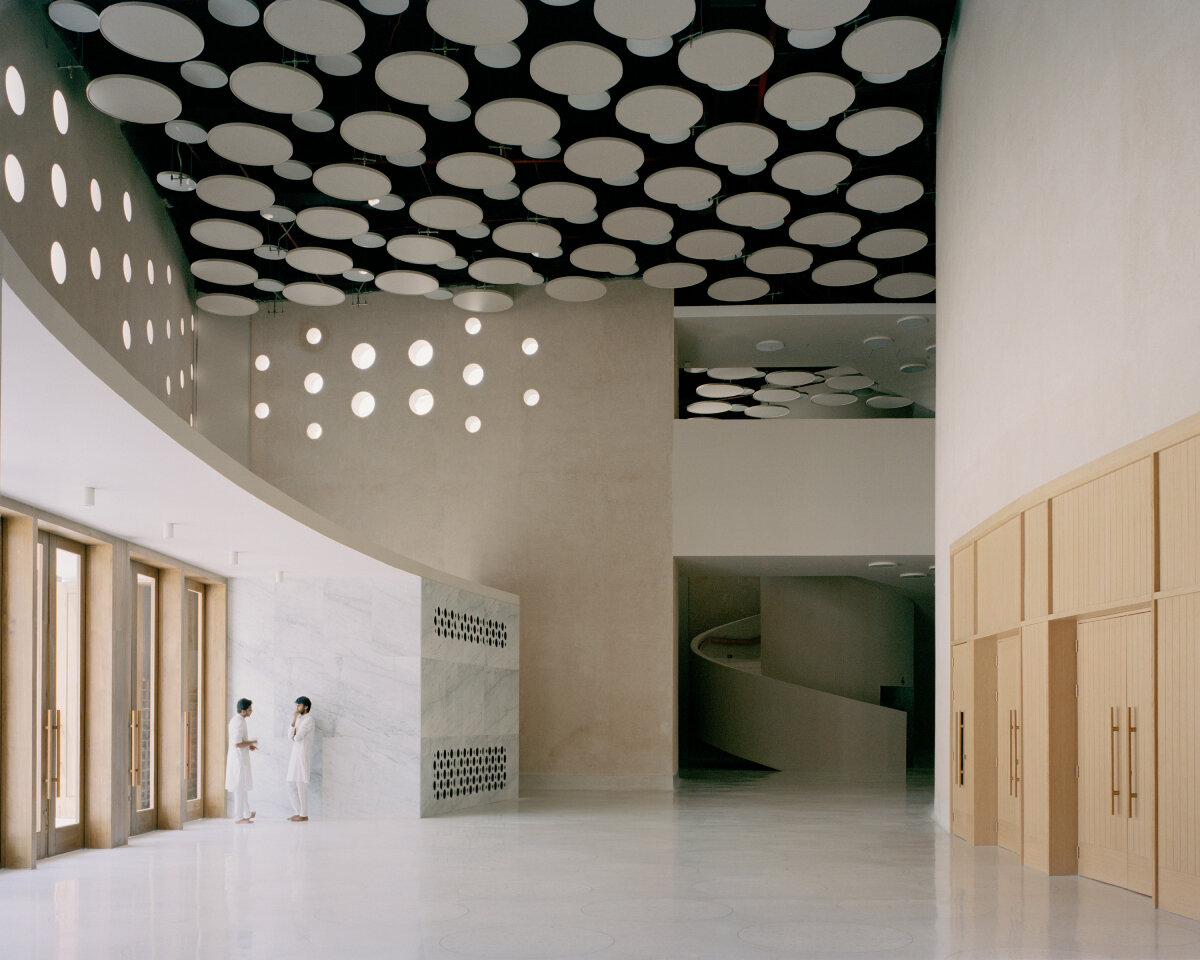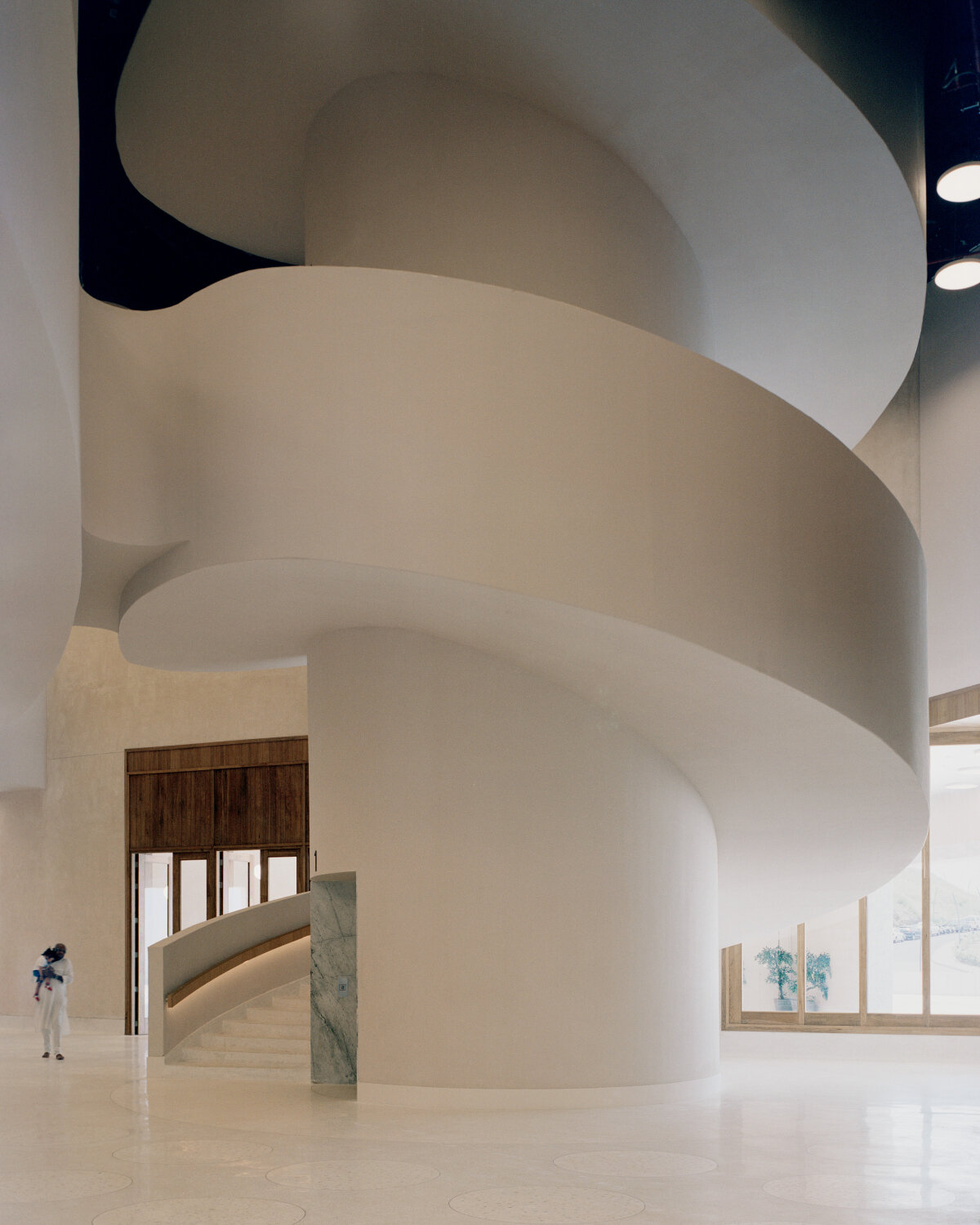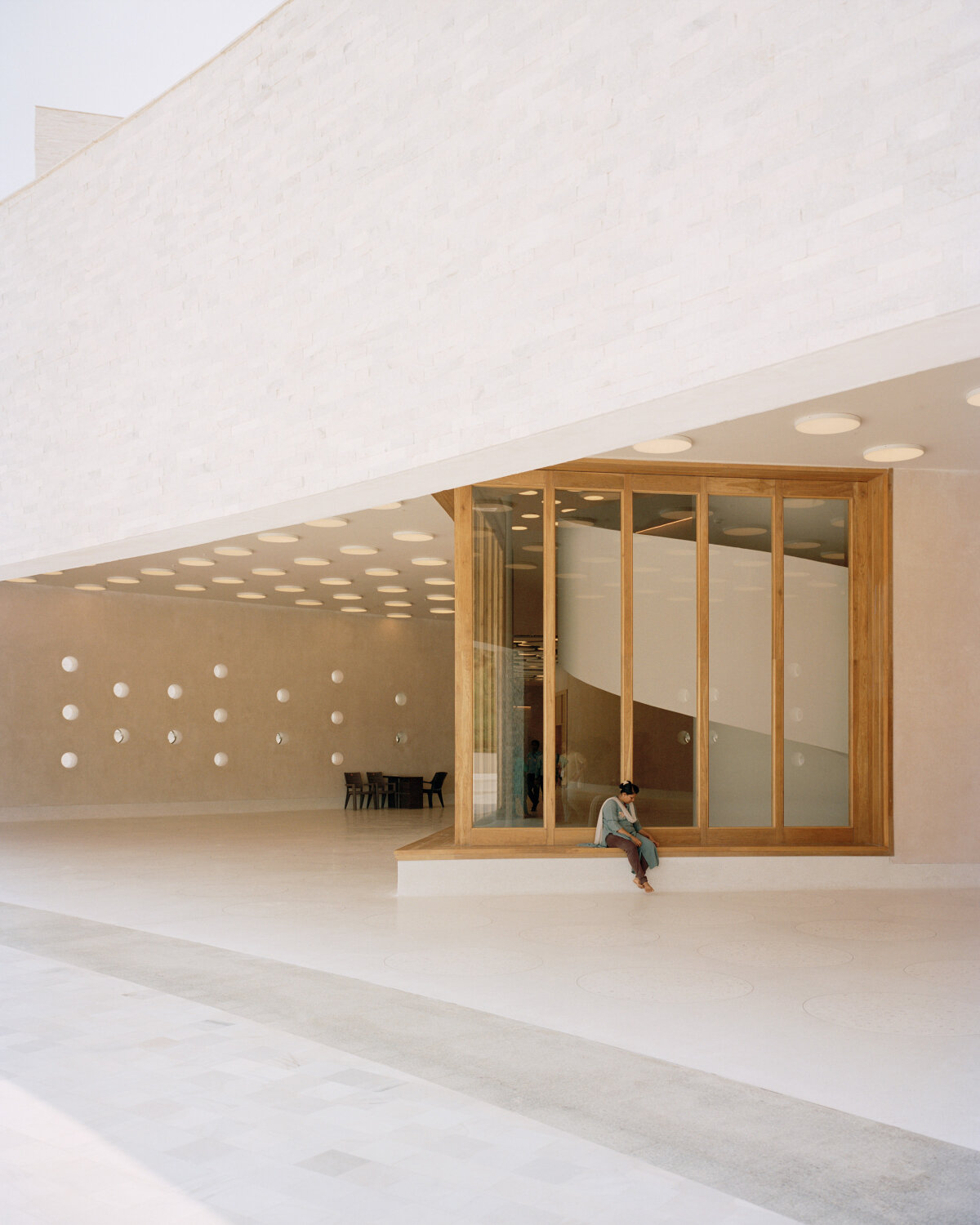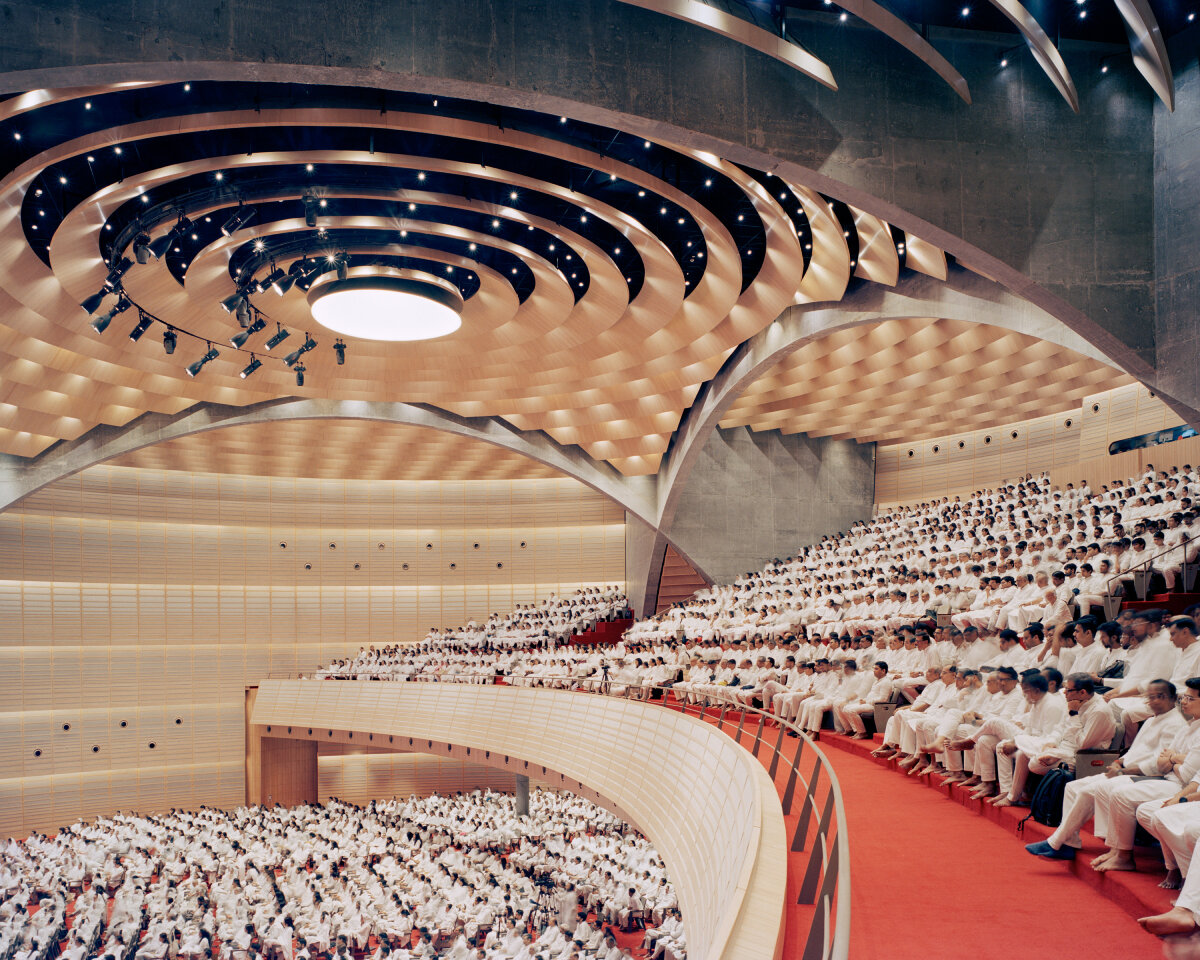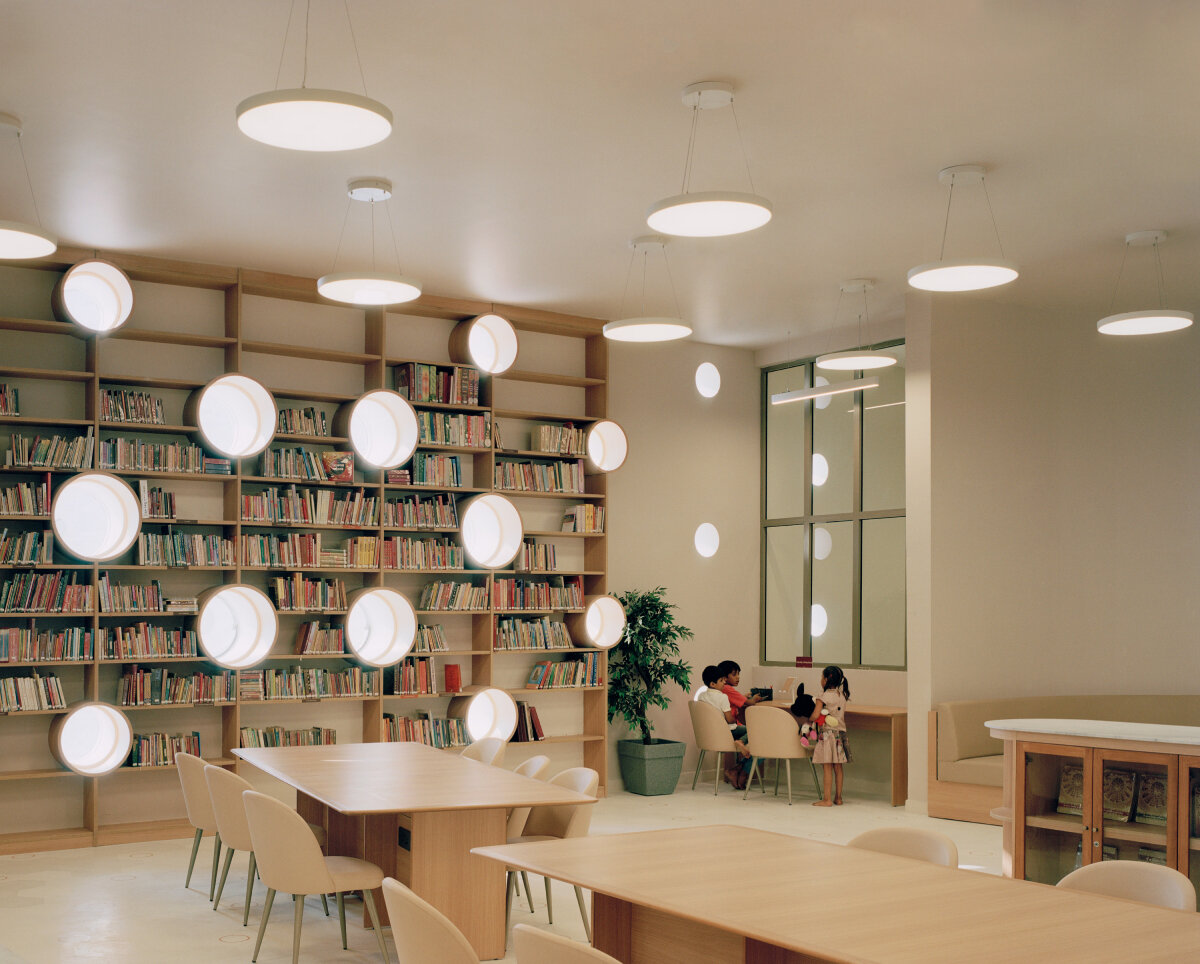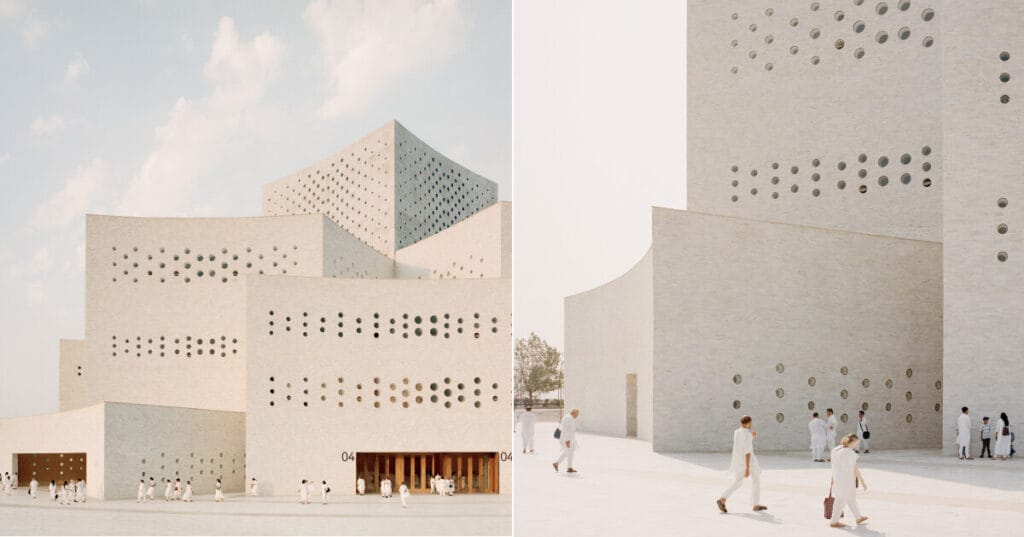serie architects completes raj sabhagruh
Serie Architects’ newly unveiled Raj Sabhagruh reinterprets Indian architectural traditions for a modern religious complex in Dharampur, Gujarat. Anchoring the sprawling 100-hectare Shrimad Rajchandra Ashram, this 16,000-square-meter development is realized as a sequence of white marble brick volumes taking cues from the Jain Samavasaran — a mythical temple symbolizing enlightenment through collective discourse. This spiritual archetype is reimagined in a contemporary form through a 13-level, 40-meter-high structure, with each level rotating 45 degrees as it ascends, creating an interlocking framework of curved concrete walls. The expansive interior is realized without columns for the central 5,000-seat discourse hall, a feat achieved through intersecting arch-like walls that define both the form and function of the building.
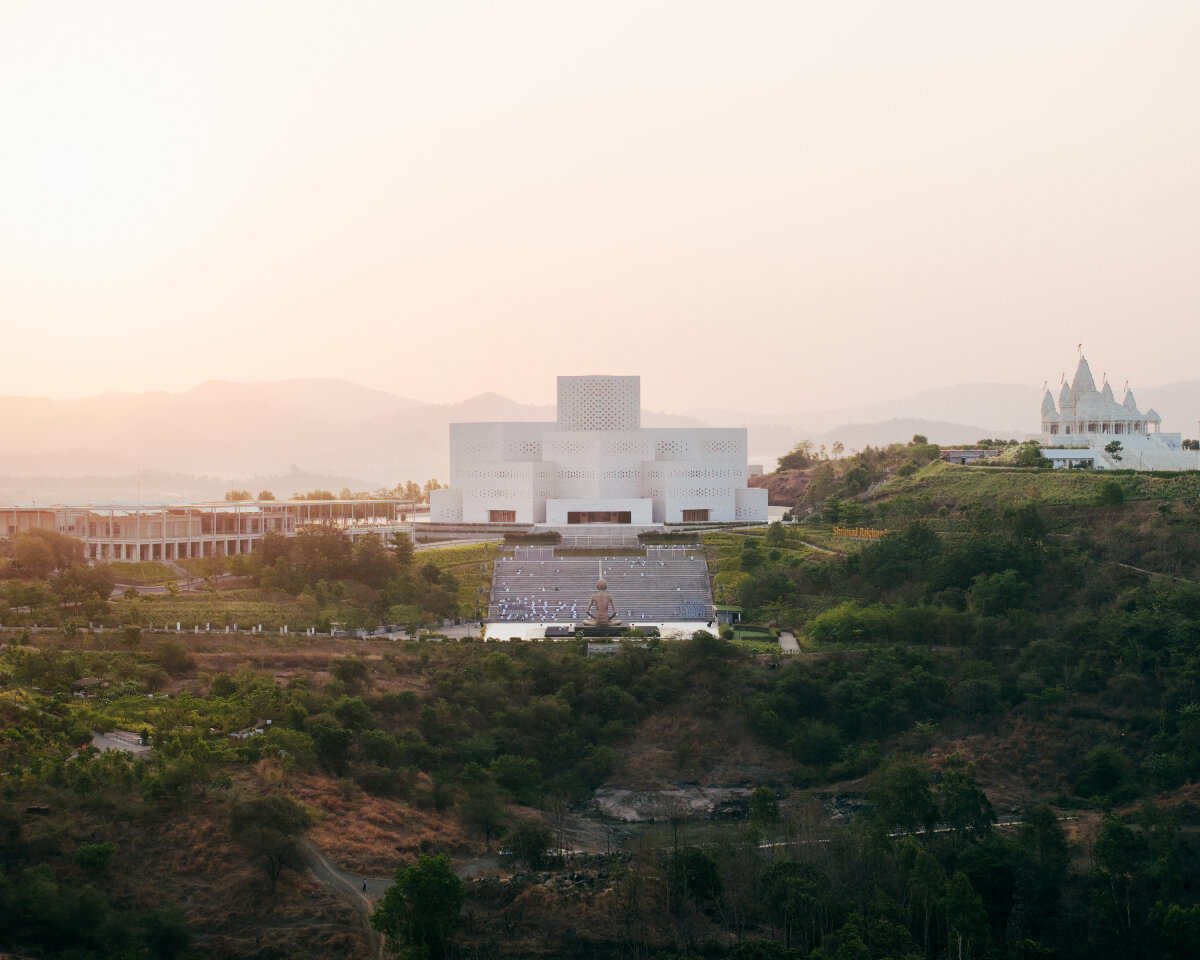
all images courtesy of Serie Architects
a meditative ashram complex in gujarat, india
The Raj Sabhagruh’s program follows a vertical narrative: beginning with the discourse hall at ground level, progressing through a museum celebrating Shrimad Rajchandra, classrooms for spiritual study, and culminating in a 300-seat meditation hall at its apex. The journey mirrors a transition from outward engagement to inward introspection — a thematic progression reflective of Jain spiritual practices.
Serie Architects carves the structure out of over 800,000 hand-cut marble bricks, salvaged from discarded Makrana marble. Their rough-hewn texture creates a luminous interplay of light throughout the day while showcasing an environmentally conscious approach to material reuse. Inside, concentric timber acoustic baffles and radiant panels enhance both the visual and auditory experience, echoing the intricately carved ceilings of traditional Jain temples.
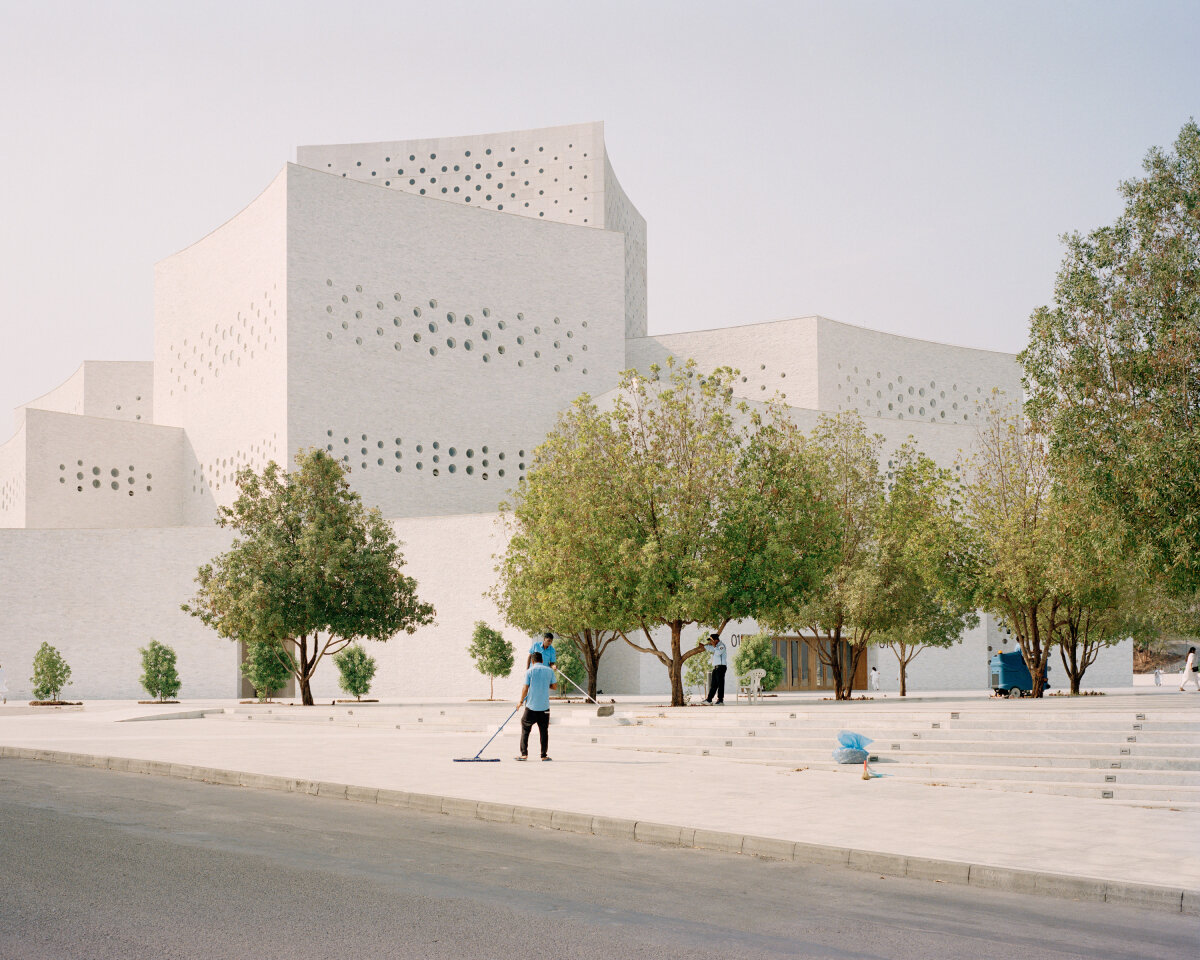
Situated on a hillock within a larger masterplan, the building is part of an integrated network that includes dining halls, an amphitheater, and a Jain temple. The concentric white marble plaza that radiates outward serves as a social nexus, linking these spaces while offering respite under the shade of ficus trees. Adjacent sacred groves and landscaped gardens further root the design in its natural and cultural context.
Christopher Lee and Kapil Gupta, principals of Serie Architects, describe the project as a dialogue between the past and present. ‘There was a deep desire to find an architecture that is contemporary, memorable, and timeless,’ they note. By integrating sustainable practices with typological references, the Raj Sabhagruh emerges as a space that is as much a spiritual symbol as it is a functional center for communal life.
